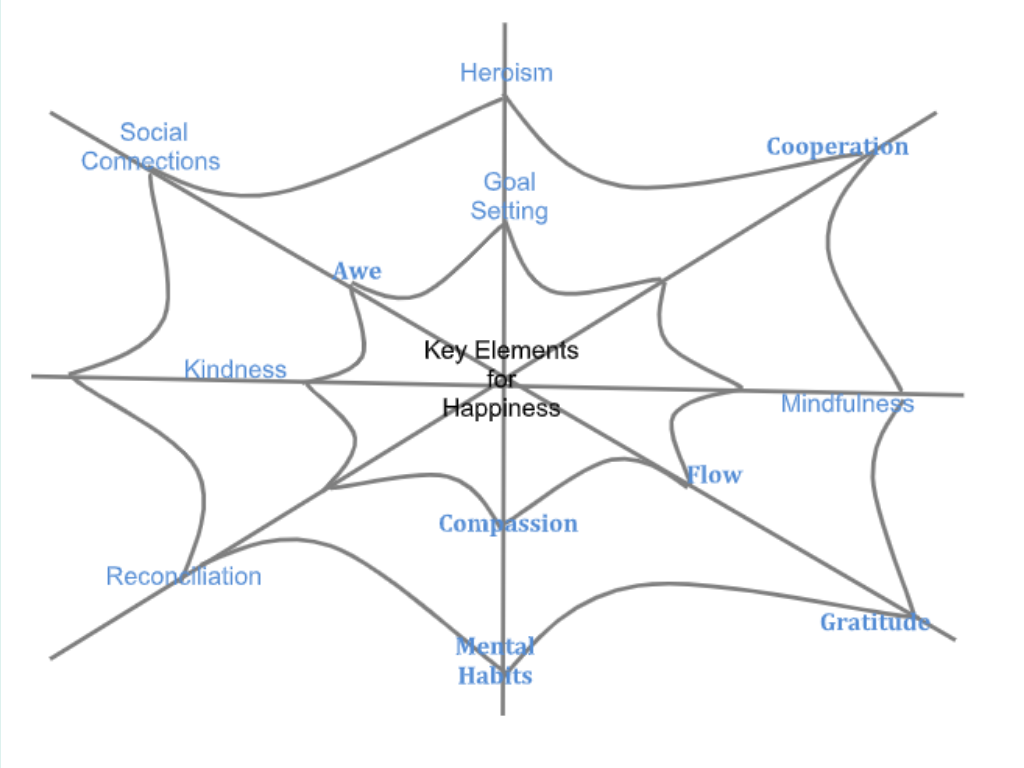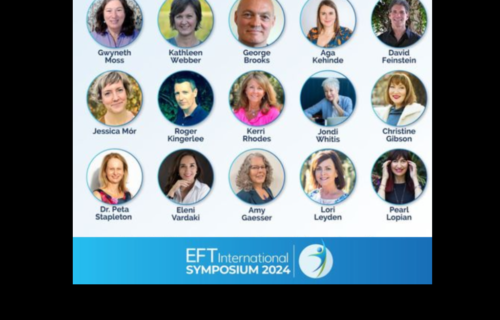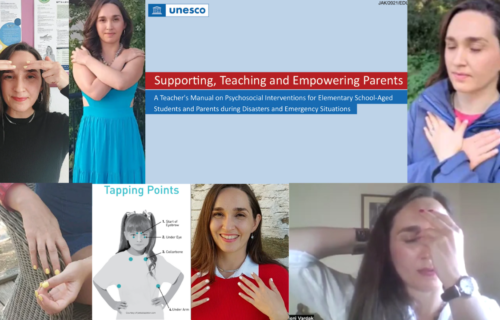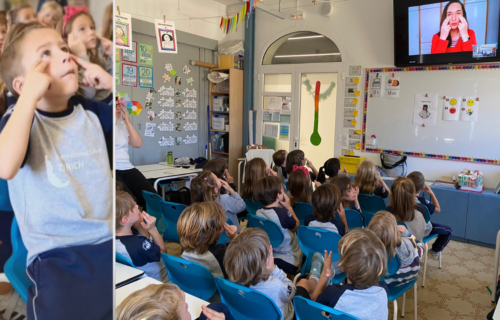
Science of Happiness Reflections
GUEST WRITER: In this article, experienced PYP (IBO Primary Years Programme) teacher, Anna Bernadas, reflects on what she’s learned about the science of happiness. It is the fruit of her reflections as a teacher during and after completing the course, The Science of Happiness, from Berkeley University, led by Dacher Keltner and Emiliana Simon-Thomas. Just so you know there is a free version of this self-paced course that’s on offer by Berkeley University up until August 2021. Have a ready of Anna’s article and see if taking advantage of this opportunity is something that interests you!
What do kids need to lead happy lives?
What is happiness and why is it so important?
I still remember the day when I started the school year by asking my students what they thought learning was. Their faces full of surprise when they realized that, although they came to school every day to learn, they could not really explain what it was. That discussion was so powerful and inspiring for us all, and once we established a common understanding of what learning is, we remained focused on achieving it.
The same thing happens with happiness. As teachers and as parents we always want our kids to be happy, but do we know what we mean when we say “happy”? To my mind if we want our kids to lead happy lives, first we need to have a common understanding of what happiness is in order to find our way there. Over time there has been many definitions and perspectives on what happiness is and inquiring into them could be an interesting way to start the journey.
“Happiness is the experience of joy, contentment, or positive well-being, combined with a sense that one’s life is good, meaningful, and worthwhile.”
Sonja Lyubomirsky
Why do we want our kids to be happy? Are we aware of the benefits of happiness?
Once again, it struck me that knowing why we are pursuing something motivates us further to achieve it. I was surprised to find out that happiness not only improves our health and relationships with others, but the positive emotions that it promotes can even transform us at a DNA level!
Happiness opens our minds, makes us more creative, innovative and even more rigorous with our work. There is a study that demonstrates how asking your kids to think of a happy memory before a test can make their score better as positive emotions give us a sense of reward and safety. When we feel positive emotions, we search for more meaningful pursuits, which in itself it makes us feel happier and encourages us to make positives changes.
In the IB Programmes, as it also seems to be in other curriculums, there is a big emphasis on educating responsible citizens ready to change the world for the better. It would seem that happiness is an integral aspect to achieve both, people willing to take action and a healthier planet.
“When you are happy you have more energy, are more goal oriented and more ready to tackle the world’s problems. When unhappy you go inwards to solve your own problems.”
Sonja Lyubomirsky
CAN BEING HAPPY BE TAUGHT?
According to the Science of Happiness, well-being is a skill and therefore it can be taught. The question here is how? Understanding what the science of happiness describes as leading a happy life is essential, as it goes beyond feeling happy. “Emodiverstiy” (variety and relative abundance of emotions) is key on the road to happiness! It is about embracing all the emotions, recognizing them and understanding what they mean in that moment. It is not about aiming to feel happy all the time, but rather, to build an acceptance of our current emotional state and to learn to self-generate mild positive emotions frequently.
“Just as biodiversity increases resilience to negative events because a single predator cannot wipe out an entire ecosystem, emodiversity may prevent specific emotions – in particular detrimental ones such as acute stress, anger, or sadness – from dominating the emotional ecosystem.”
Jorid Quoidbach
Whilst being aware of and experiencing a variety of emotions is therefore important, learning how to self generate positive emotions is crucial too. My goal as an educator is to find ways to embed the key elements that lead to a happy life into my teaching and learning culture. These key elements work together as a system being interconnected, so when you work on one, you also strengthen the others. I like to think of them as a web that we help our kids build and extend with everything we do.
WHAT ARE THE KEY ELEMENTS TO LEAD HAPPY LIVES?

I would like to briefly touch on each one and share my reflections about them.
“A happy life is much more about making friends than it is about making the grade.”
Lauren Klein
Lauren’s words made me pause and think for quite a while.Was I putting as much effort into my student’s social life as I was into their academics? Was I using the power of social connection to improve my student’s learning? There is a study from the Science of Touch in classrooms by Nicolas Gueguen (Nonverbal Encouragement of Participation In A Course: The Effect of Touching, 2004), which proves that when teachers pat the students on the back or arm, they are more likely to participate in class. He also mentions other studies that show how touch can increase self-confidence, performance, involvement and positive behavior. Teaching kids how create and nurture SOCIAL CONNECTIONS is essential for us as humans who have been shaped by evolution to connect to each other. According to neuroscience, the most demanding task for our brains is our social life; which is the one that activates the most parts of the brain simultaneously.
How do I teach my kids about COMPASSION and KINDNESS? I was surprised when I read about what stops people from being kind, such as being busy; what makes people feel better about giving to others, such as choice; and about the stages of compassion. It made me rethink how I approach being kind in my classroom; maybe it is more than just being caring.
“Gratitude helps children become the best person they can be – their best person in the world.”
Giacomo Bono
GRATITUDE as a state of mind improves student’s mood, mental health and their life satisfaction. There is solid scientific evidence that gratitude broadens children’s thinking and energizes their learning. How often do we teach them to be grateful? I think that most of the time we just expect them to be. Maybe it is time to encourage kids to notice the good things around them in a more mindful way. The next element really opened my eyes. I have been an IB PYP teacher for 12 years and I am passionate about inspiring my students to take action; however, I had never once thought of teaching them about HEROISM. What makes a hero? How do I nurture their “heroic imagination”? One place to start is to develop their “discontinuity detector” by being mindful to carefully and critically evaluate situations. We all get our kids to cooperate but did you know that according to evolutionary biologists, COOPERATION is one of the most important and beneficial behaviours on Earth? In order to be good cooperators and nurture our social connections, we need to teach RECONCILIATION. Once again, I have taught kids to apologize, but did I know how to apologize effectively? Did I show them how to forgive or how to build trust?
“Trust is central to what makes human communities work.”
John Gottman
MINDFULNESS, the ability of the mind to focus on the now and just be present. It has become very popular nowadays and according to the neuroscience, providing our brain with a break affects our neuronal connections; improving our memory, emotional control, empathy, our ability to focus and to learn. So I wonder, do we as teachers provide enough opportunities and the right environment for our students to be mindful? We have such busy days, that I fear key moments to enhance happiness are often missed.
“Mindfulness meditation gives us time in our lives when we can suspend judgement and unleash our natural curiosity about the workings of the mind, approaching our experience with warmth and kindness – to ourselves and others.”
Barry Boyce
Guiding our kids into developing positive MENTAL HABITS; such as optimism, becoming satisficers (able to find contentment with choices as long as they pass a basic threshold of acceptability) and fostering self-compassion are crucial for them to learn to pay attention to the positive. Let’s take advantage of the self-directed neuroplasticity and provide the right support for our children to use their own mind’s ability to change their brain.
In the IB schools, and probably in many others, we know how important GOAL SETTING is, but what kind of goals do we set? Apparently goals that benefit others and are more social make us happier, so maybe apart from the academic and behavioral goals, we could also encourage our kids to find out what they really want and expand their goals to a more social level. Here is one element that really blew my mind away; the feeling of AWE. Apart from boosting your happiness, it deepens your sense of modesty, it makes you more patient, more generous, more ethical and it even increases your intellectual curiosity! Do you ever plan any experiences for your students to be in awe of someone or something around them?
Another interesting one, particularly for teachers, is the state of FLOW. That moment of balance between challenge and skills when we are completely focused and immersed in what we are doing. Researchers are currently studying the long-term benefits of developing interest in a topic rather than just seeing it as important to academic achievement. Do we know how to get our kids into a state of flow in the classroom?
“Learning is about desire rather than capacity.”
David Shernoff
LAUGHTER and PLAY are well-known elements to lead happy lives. As a teacher I have wondered for a while if I allow enough time for my students to laugh and play in the classroom. I have even asked myself if I, as an adult, laugh and play enough to be a good role model for them.
Finally, the power of NARRATIVE; those symbolic structures that we use to give our lives shape and meaning. As children we start creating the narratives that will guide us. Sometimes they are just simple sentences; such as, “I am not good at sports”. Are our students aware of their narratives? Are they positive and helpful? Let’s help them create those narratives that will place them on the road to happiness.
does your classroom culture lead kids to happy lives?
As the cultural learners that we are, we learn from who and what is around us. As teachers, that is a tremendous responsibility and an excellent opportunity for teacher agency. If our school or organization is not directly promoting well-being, we need to find ways to embed it in our classroom culture.
It is not about dedicating a lesson a week to it but to weave it into everything we do for it to become who we are as a community. It takes around three months for our body cells to turn over, which is about how long it takes us to settle into new habits. Learning to lead happy lives may take some time but we can all learn to do it. Below you will find a list of resources for you to be inspired!
“Having a meaningful life contributes to being happy and
being happy may also contribute to finding life more meaningful.”
Baumesteir
This is a list of simple activities that you can use to promote happiness in your classroom. Use them to get the conversation started with your students and to shift their habits.
- Ask your students to reflect on 3 good things that happened to them today and wonder why (if possible in writing)
- Encourage your students to do random acts of kindness
- Expose your students to stories of heroic people
- Look to nature for examples of cooperation
- End the school day focusing on a good experience
- Encourage the students to hug themselves for a few minutes (self-compassion)
- Ask the students to write about their best possible self (goal setting)
- Journaling: have students write about things they are grateful for
- Invite the students to write a letter to someone explaining in detail why they are grateful
- Ask the students to think of a difficult or negative experience and get a new perspective on it; to try look at it with gratitude
- Create a Gratitude Wall
- Take the students on an awe walk and help them tap into their wonder
- Experience loving-kindness meditation with your students
You may also want to check out this Berkeley University article on the benefits of meditating with kids: https://greatergood.berkeley.edu/article/item/meditating_with_kids
This is a list of websites and links where you can find out more about the contents in the article:
- Link to join the course of “The Science of Happiness”
https://www.edx.org/course/the-science-of-happiness-3 - The Greater Good Science Center (From here you can also access The Greater Good in Education and The Greater Good in Action, both full of ideas for you and your students to lead happy lives.)
https://ggsc.berkeley.edu/ - Eight Tips for Fostering Flow in the Classroom; Article from The Greater Good Magazine
https://greatergood.berkeley.edu/article/item/eight_tips_for_fostering_flow_in_the_classroom - Articles by Giacomo Bono on how to teach gratitude in schools from The Greater Good
Magazine
https://greatergood.berkeley.edu/profile/Giacomo_Bono - Mindfulness Academy for mindful teaching – Eline Snel (Very interesting book “Sitting Still Like a Frog” and App available)
https://www.elinesnel.com/en/field/ - Fablefy, Making Mindfulness Easy
https://www.fablefy.com/ - Big Life Journal – Growth Mindset Blog
https://biglifejournal.com/blogs/blog - The Conscious Stories by Andrew Newman (Stories written for bedtime but ideal to use with young students in the classroom)
https://shop.consciousstories.com/ - Roots for Empathy; program that you can implement in your school or get inspiration from. https://rootsofempathy.org/
- Downloadable Toolkit for Promoting Empathy in Schools from Start Empathy https://startempathy.org/resources/toolkit/
- Dance for Kindness; a global event to promote kindness in your community
https://www.danceforkindness.com/ - Heroic Imagination Project; where you can find out more about creating heroes. https://www.heroicimagination.org/
- “The World Is A Stage: We write narratives that rule our lives!” Article by Ragini Rao
https://www.infinumgrowth.com/world-stage-write-narratives-rule-lives/ - “Nonverbal Encouragement of Participation in a Course: The Effect of Touching”, Study by Nicolas Guéguen, Kluwer Academic Publishers (Social Psychology of Education 7: 89-98, 2004).
- “Because I’m Happy”; An intriguing study notes a correlation between a student’s level of happiness and GPA: https://www.researchgate.net/publication/349288266_Exploring_the_Relationship_Between_Students’_Academic_Success_and_Happiness_Levels_in_the_Higher_Education_Settings_During_the_Lockdown_Period_of_COVID-19
About the author

Anna Bernadas is an international teacher who is passionate about experiencing teaching in a variety of contexts to explore how students learn. After completing her practicum in England, she started her teaching journey 15 years ago. Working in several different countries has offered her the perfect chance to gain insight into a variety of teaching and learning models, particularly under the IBO framework. In recent years, she has made it her goal to deepen her understanding and skills, in order to create learning environments that invite learners to inquiry into themselves, in their pursuit to becoming their best human. Also by Anna, “The Value of Relaxation Time For 1st Grade PYP Students.“




